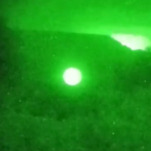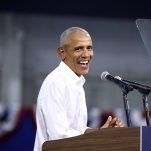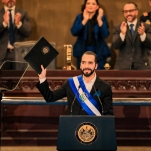When cops killed a kid in Istanbul, armed leftists took a prosecutor hostage
Europe’s largest courthouse, Istanbul’s towering palace of justice, played host on Tuesday to a startling scene of revolutionary violence. Two leftist militants took a prosecutor, Mehmet Salim Kariz, hostage in his office. Acting in the name of the far left Revolutionary People’s Liberation Party/Front (DHKP/C), the men released a photo with a gun to Kariz’s head and issued demands that would not be met. A shootout with police left the hostage-takers and the hostage all dead by night.
Bandying anti-police slogans and breaking windows is enough to be labeled a violent radical in the U.S. Marxist-Leninists here are more likely to sell a weekly rag with “worker” in the title than take up armed struggle. The idea of beret-clad hostage taking feels as distant as the journey from Istanbul from New York. But the context of the DHKP/C’s action is not foreign: The militants demanded that police be held accountable for killing a teenage boy, who was demonized posthumously by the authorities and whose death-by-cop led to mass protests.
Kariz had been the lead prosecutor in an investigation into the police killing of 15-year-old Berkin Elvan. The teen was struck in the face by a tear gas canister while walking to buy bread during the height of anti-government protests in June 2013. He fell into a coma and died nine months later, re-catalyzing demonstrations and popular rage. No police have been brought to trial and Elvan’s image has become a ubiquitous symbol of resistance. A friend of mine in Istanbul said even his unibrow became a protest emblem—two connected arches, like a seagull’s open wings.
As no strangers to entrenched police impunity, we in the U.S. shouldn’t be mystified by the DHKP/C’s actions. The fatal hostage taking, and a follow up shooting attack at the Istanbul police headquarters on Wednesday, were acts of profound violence. But this is not senseless violence. It makes total sense. The militants took the prosecutor hostage and announced their demands, including a confession on live television by police to the killing of Elvan, that charges be dropped against anti-government protesters, and that the police be tried in a “people’s court.”
-

-

-

-

-

-

-

-

-

-

-

-

-

-

-

-

-

-

-

-

-

-

-

-

-

-

-

-

-

-

-

-

-

-

-

-

-

-

-

-

-

-

-

-

-

-

-

-

-

-

-

-

-

-

-

-

-

-

-

-

-

-

-

-

-

-

-

-

-

-

-

-

-

-

-

-

-

-

-

-

-

-

-

-

-

-

-

-

-

-

-

-

-

-

-

-

-

-

-

-

-

-

-

-

-

-

-

-












































































































